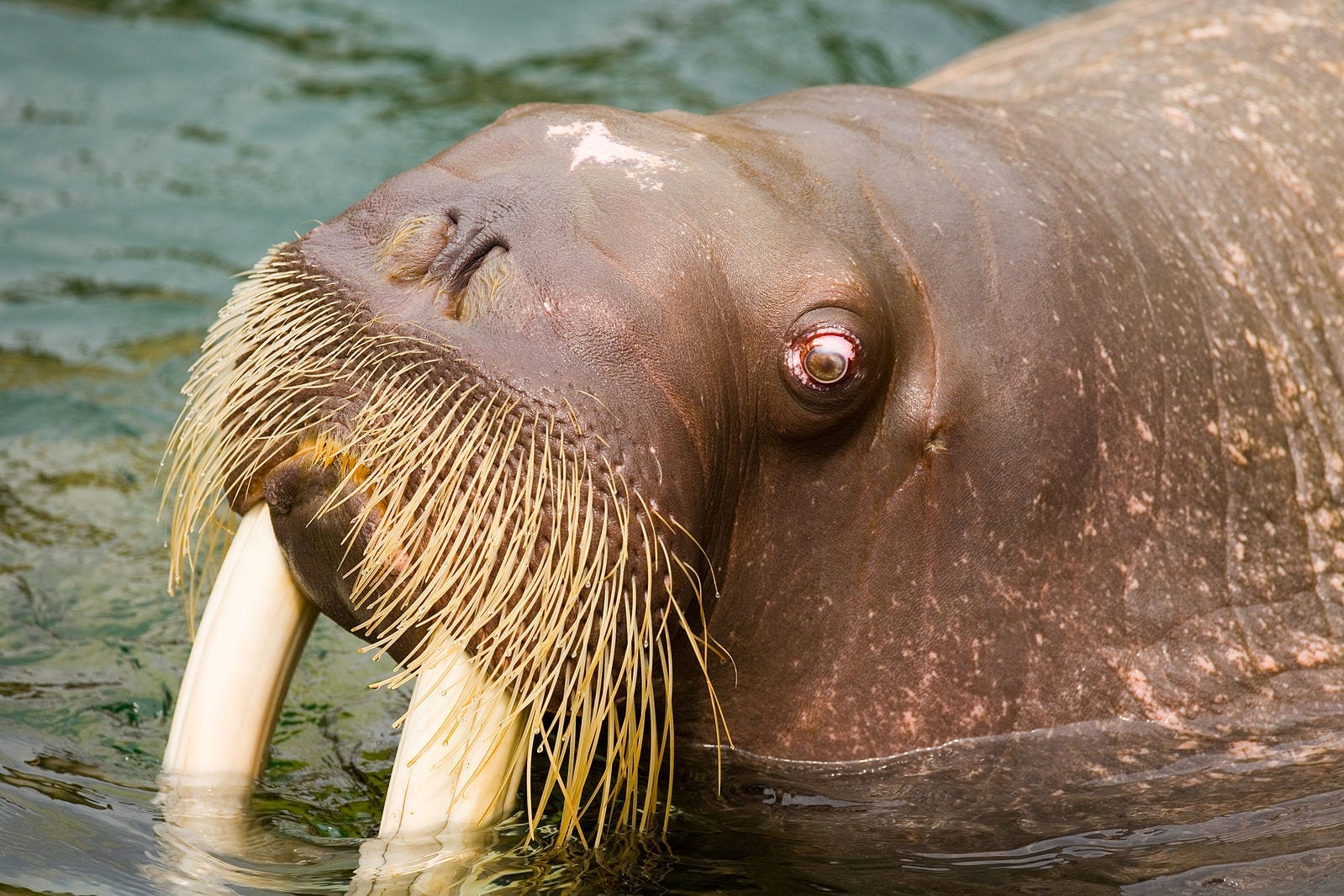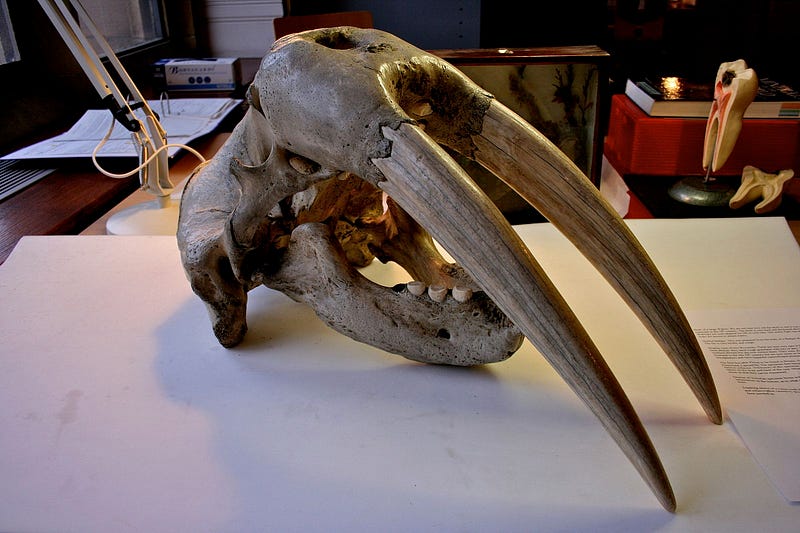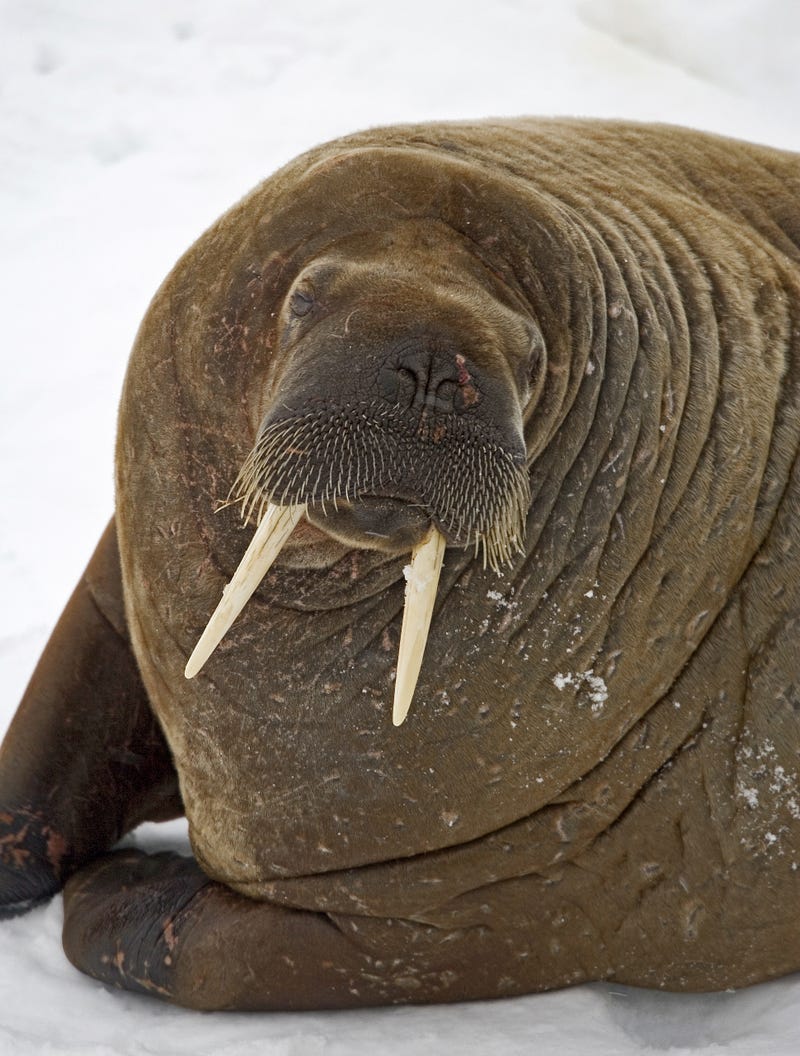
The majestic walrus, Odobenus rosmarus, is an exclusively Arctic and subarctic species of marine mammal. Much like whales, they and their close cousins the seals descend from a terrestrial progenitor that subsequently returned to the oceans. However, while whales come from an even-toed ungulate (deer, sheep, pigs, etc.), walruses and seals belong to a group called caniforms, which includes bears, weasels, and skunks as well as wolves and other dogs (so when you see a picture calling seals ‘dog mermaids’, it’s not that far off).
Walruses are always recognizable with their tusks (enlarged canine teeth like in pigs, as compared to elephants whose tusks are incisors) and thick whiskers that look like a giant moustache. Like most tusked species, both male and female individuals have them, though the male tusks tend to be larger. This is because they are generally used for fighting and dominance display and not for foraging. This makes sense when you look at the skull, as the tusks do not make particularly efficient weapons or tools based on their size and orientation. Walruses are also quite large with great amounts of blubber to help survive in frigid Arctic waters.

As for the walrus diet, it is actually quite varied, though usually confined to organisms found along the sea floor. However, they are primarily molluscivores, meaning that their diet is composed heavily of mollusks. In fact, Lewis Carroll in his famous poem actually came very close to using the actual walrus’ favorite food. They do prefer bivalve mollusks, but oysters are not frequently among these due to their habitat being closer to shore. Instead, walruses tend to feed on benthic clams that have buried themselves in the sediment of the sea bottom.
Walrus and the Carpenter by Disney, YouTube
The truly remarkable thing is how the walrus goes about eating its prey. First, in order to find the bivalves, it uses its whiskers to probe the seabed. Anyone with a cat is likely familiar with how tactilely sensitive these structures are. While the hair itself is simply a length of keratin like any other hair, the follicle contains a special blood capsule that contains numerous nerve cells, allowing for the sensing of minute changes in touch and pressure. In fact, walruses and seals are some of the most sensitive of all, with as much as 10 times as many nerve cells per whisker as a cat or a mouse. This sensitivity allows the walrus to differentiate objects as small as a few millimeters in width and depth.
Once a walrus has found a clam, it must get the edible portion out of that tough shell. While it might be amusing to imagine them using their tusks like a giant can opener, we’ve already discussed that this is not the way of it above. Instead, the walrus attacks with suction. It uses its lips to create a seal around the mollusk and then rapidly withdraws its tongue into its mouth. This creates a vacuum that sucks the meat out of its prey. The walrus palate is even shaped specifically in a vaulted manner to maximize potential suction.

Walrus feeding rates also vary based on the time of year. Males will greatly reduce their overall food intake during the annual mating season, which occurs between January and April. This takes place in and around Arctic ice floes. After this, the walrus herds will migrate to rocky beaches and outcroppings for the summer and autumn months as the ice thins. This is when feeding picks up again. The walrus must eat a considerable amount to maintain its blubber reserves to last through the frigid Arctic winters.
If you enjoyed this week’s story, please consider sharing it with others. As always, let me know what things you like and what you think needs improvement. We’ve reached the final third of Season 5 and while I already have some inspiration for the next season’s topic, I’m always interested in what sorts of things you would be interested in reading about, so let me know if you have any ideas of your own and I’ll mention you in the Season intro story if I end up using it.